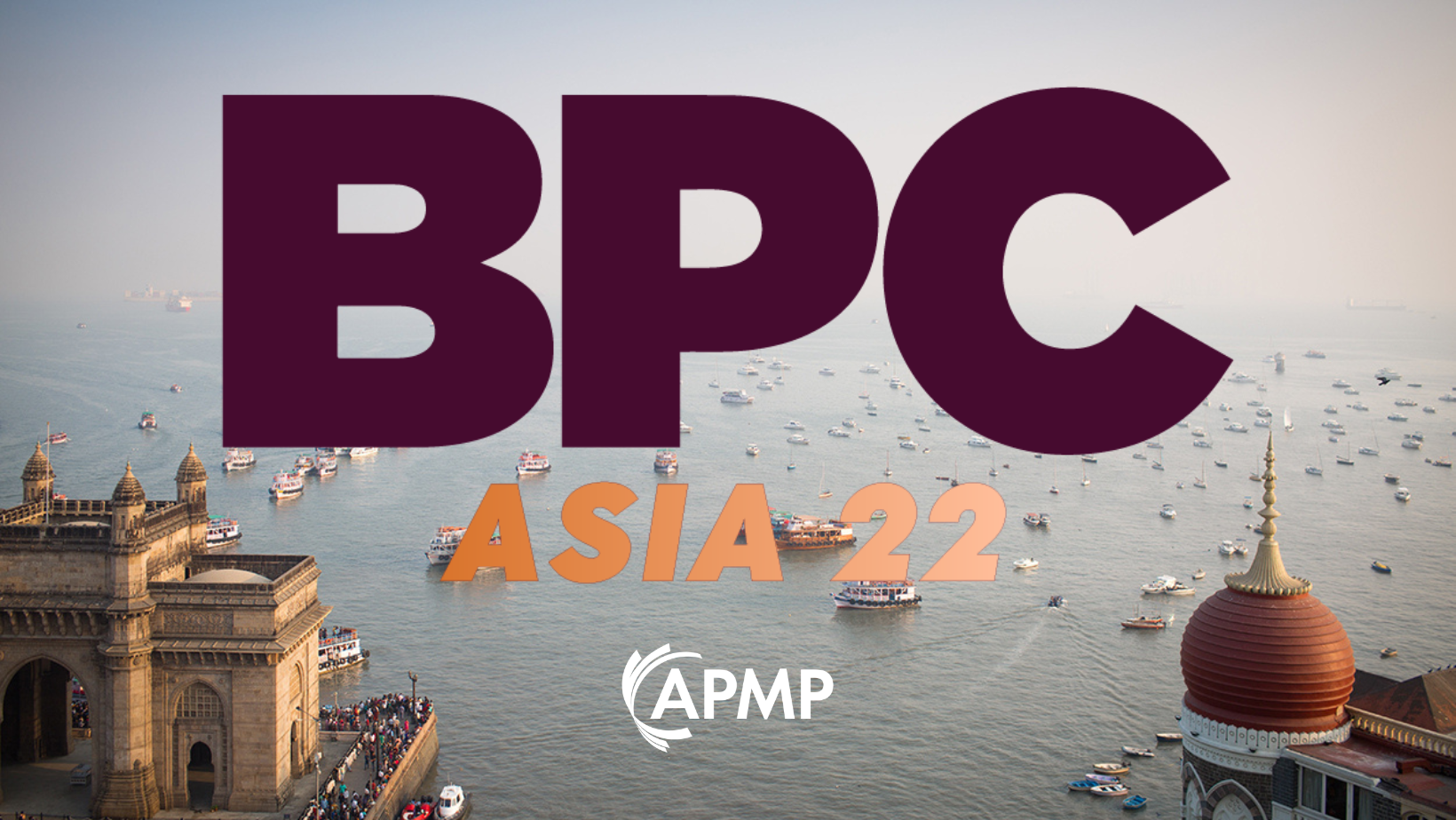APMP India Chair, Abhijit Majumdar, kicked off the inaugural BPC Asia by addressing the 196 attendees and sharing some APMP history. He gave a shout-out to the Great Charlie Divine as a mentor on certification, acknowledged the rise of APMP India as the fifth largest APMP chapter in the world, and asked the audience to think about what the bid professional does and how APMP certification fits into that. A full day of information-packed sessions followed.
The “Young Monk” Krishna Dhan Das started things off by delivering a keynote speech that encouraged attendees to think about the Four Levels of Attitude in our chosen profession.
- Love for the profession and work. Loving your choices helps you win.
- Duty to the employer and projects. Honor the opportunity from your employer.
- Motivation through your Desire to win and be successful
- Fear — never let fear drive you. Focus on the first three.
Shortly after, Shashi Kapoor Kukar said Building A Sustainable Competitive Advantage Through DEI is important. Here are some takeaways from her session.
- We tend to like people like ourselves. We generally like ourselves and people like us 90 percent of the time.
- The people that are not like us are generally shut out.
- We don’t celebrate differences as much as we celebrate ourselves.
- We are good people and must recognize that our colleagues are too.
- Don’t make decisions based on pressure and bias. Slow down, breathe, and make clear decisions which generally welcomes DEI.
- Review the labels we give other people and ask ourselves if it is fair.
- If you want people to produce at a high level, then allow people to carry their whole selves to work. Welcome their diversity and celebrate it so the staff person can be who they are.
Later on, Manish Bafna and Rajarshi Chanda of RFPIO and Fujitsu, respectively, talked about AI for the bid and proposal industry. Here are some takeaways from their session.
- The Power of machine learning is here and real.
- It will not replace decision making but it will enhance and strengthen it 3)AI provides the information to improve performance and it is a myth that it will replace the performer.
Then the Academy of Customer Experience had attendees play a fun Bid and Proposal Game Called Code Name 294 – Win the Numbers Game.
- They challenged us to think of what current game best represents Bid Life of the Future. Answers included video poker, Monopoly, Cards, and Risk.
- How do you gamify the bid and proposal process? Make it fun, thoughtful, and intentional.
In another session, Sunil Agrawal suggested that Bid and Proposal professionals are like an orchestra. Here are some of the lessons from his session.
- Seating and task organization are important. The conductor is the person who sets the pace.
- The conductor/bid managers give feedback to the orchestra/bid team members
- The conductor/bid manager is one step ahead. Before the musicians react, the conductor/bid manager is leading through Action!
- Let the orchestra do their jobs through teamwork. Don’t micromanage. Let them do what they have been trained to do.
Later on, Subba Bhairavabhatla of Teleperformance led a discussion on compelling storytelling, and here are the takeaways from this session.
- Be observant and learn. See the changes that are right before your eyes.
- Be brief and have fun in your story.
- Every story is different so look for the best parts to make it compelling. Tell a story to make it stick.
- Practice telling your story in one minute or less.
- Look for the hero in your story and that hero is your customer.
- Integrate neuroscience into your story. Create strong neurological responses.
- The Four Cs of storytelling are Context, Character, Conflict, and Creation
- Look for stories from our lives that will connect the story to your customers.
The day concluded with an all-star panel, moderated by Sam Singh, which discussed the Future of Digitalization, Design, and Delivery in a Fireside Chat. Here are some takeaways.
- Receiving proposals will require personalization “some of the time” moving to “all the time,” says Shubhada Kulkarni.
- Sell the experience through video. Do this in addition to the standard PDF.
- The client should have the appetite by making it more engaging by working with the proposals. Make sure the client is receptive to the innovation.
- Most people’s attention span is short. Write in a concise manner.
- Audiences usually can pay attention for 14 minutes. Communicate in less than 14 minutes to hold the attention says Ripunjay Nandikonda.
- Video is regularly used in commercial proposals but government/public video is still lagging behind. The change to video though is bound to happen says Shifali Mandhania. The last frontier for video in proposals is government and public sector proposals.
Make sure to check in tomorrow for the BPC Asia 2022 Day Two Takeaways!




Join the Conversation